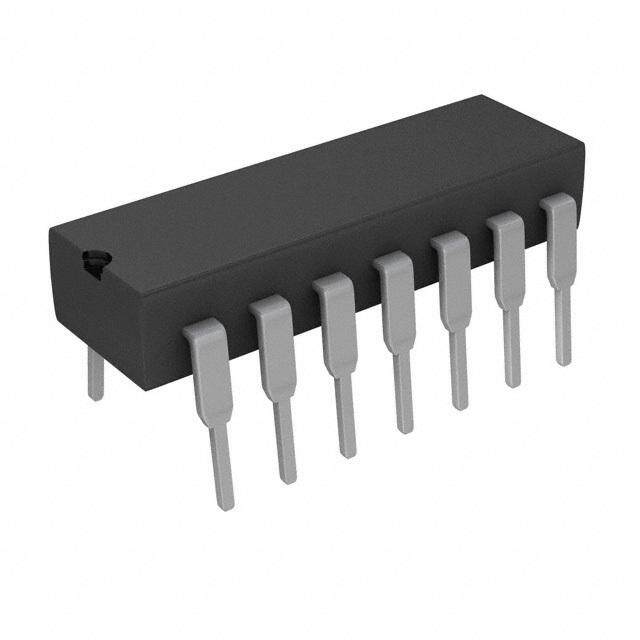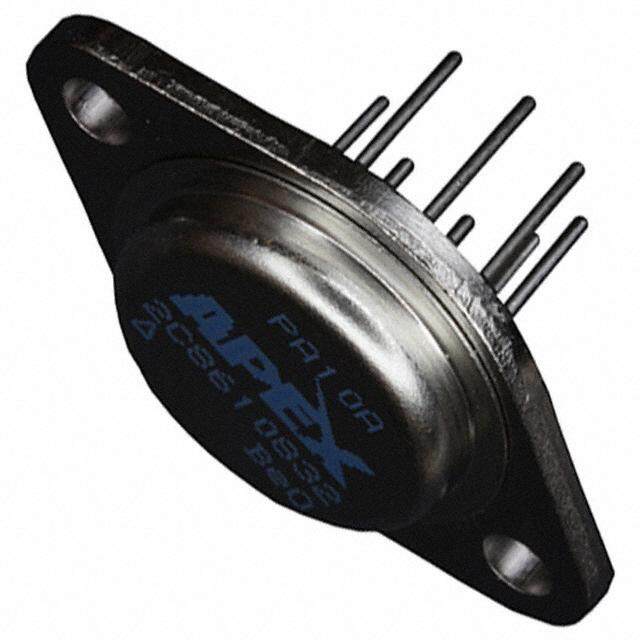ICGOO在线商城 > 集成电路(IC) > 线性 - 放大器 - 仪表,运算放大器,缓冲器放大器 > AD8009AR
- 型号: AD8009AR
- 制造商: Analog
- 库位|库存: xxxx|xxxx
- 要求:
| 数量阶梯 | 香港交货 | 国内含税 |
| +xxxx | $xxxx | ¥xxxx |
查看当月历史价格
查看今年历史价格
AD8009AR产品简介:
ICGOO电子元器件商城为您提供AD8009AR由Analog设计生产,在icgoo商城现货销售,并且可以通过原厂、代理商等渠道进行代购。 AD8009AR价格参考¥询价-¥询价。AnalogAD8009AR封装/规格:线性 - 放大器 - 仪表,运算放大器,缓冲器放大器, 电流反馈 放大器 1 电路 8-SOIC。您可以下载AD8009AR参考资料、Datasheet数据手册功能说明书,资料中有AD8009AR 详细功能的应用电路图电压和使用方法及教程。
AD8009AR是由Analog Devices Inc.(ADI公司)生产的一款高性能运算放大器,属于线性放大器系列中的仪表、运算及缓冲放大器类别。这款器件因其卓越的性能和广泛的适用性,在多种应用场景中表现出色。 1. 高速信号处理 AD8009AR具有极高的带宽(高达260 MHz),能够处理高速信号。它适用于需要快速响应和高精度的场合,如高速数据采集系统、通信设备中的信号调理电路等。其低失真和快速建立时间使其成为高频信号处理的理想选择。 2. 视频和图像处理 在视频和图像处理领域,AD8009AR常用于驱动显示器或作为视频信号链中的关键组件。它的宽带宽和低噪声特性确保了视频信号的清晰度和稳定性,特别适合高清或超高清视频传输系统。 3. 测试与测量设备 AD8009AR广泛应用于测试与测量设备中,如示波器、频谱分析仪等。这些设备要求高精度和快速响应,以捕捉瞬态信号。AD8009AR的高增益带宽积和快速建立时间使其能够满足这些需求,提供准确可靠的测量结果。 4. 医疗电子设备 在医疗电子设备中,AD8009AR可用于心电图(ECG)、脑电图(EEG)等生理信号的放大和处理。其低噪声和高共模抑制比(CMRR)确保了信号的纯净性和准确性,对于诊断和监测至关重要。 5. 工业自动化 AD8009AR还适用于工业自动化领域的传感器信号调理电路。例如,在温度、压力或位移传感器中,AD8009AR可以将微弱的传感器输出信号放大到适合后续处理的水平,同时保持信号的完整性。 6. 射频(RF)应用 尽管AD8009AR主要用于中低频信号处理,但在某些射频前端电路中,它也可以作为IF(中频)放大器使用。其低噪声和高线性度有助于提高系统的整体性能。 总之,AD8009AR凭借其出色的电气特性,在高速信号处理、视频处理、测试与测量、医疗电子、工业自动化以及射频应用等多个领域展现出强大的适应性和可靠性。
| 参数 | 数值 |
| -3db带宽 | 1GHz |
| 产品目录 | 集成电路 (IC)半导体 |
| 描述 | IC OPAMP CFA 1GHZ 8SOIC高速运算放大器 1GHz 5,500V/uS Low Distortion |
| 产品分类 | Linear - Amplifiers - Instrumentation, OP Amps, Buffer Amps集成电路 - IC |
| 品牌 | Analog Devices |
| 产品手册 | |
| 产品图片 |
|
| rohs | 否不符合限制有害物质指令(RoHS)规范要求 |
| 产品系列 | 放大器 IC,高速运算放大器,Analog Devices AD8009AR- |
| 数据手册 | |
| 产品型号 | AD8009AR |
| PCN过时产品 | |
| 产品 | Current Feedback Amplifier |
| 产品培训模块 | http://www.digikey.cn/PTM/IndividualPTM.page?site=cn&lang=zhs&ptm=30008http://www.digikey.cn/PTM/IndividualPTM.page?site=cn&lang=zhs&ptm=26202 |
| 产品目录页面 | |
| 产品种类 | |
| 供应商器件封装 | 8-SOIC N |
| 共模抑制比—最小值 | 52 dB |
| 关闭 | No Shutdown |
| 包装 | 管件 |
| 压摆率 | 5500 V/µs |
| 商标 | Analog Devices |
| 增益带宽积 | - |
| 安装类型 | 表面贴装 |
| 安装风格 | SMD/SMT |
| 封装 | Tube |
| 封装/外壳 | 8-SOIC(0.154",3.90mm 宽) |
| 封装/箱体 | SOIC-8 |
| 工作温度 | -40°C ~ 85°C |
| 工作电源电压 | 5 V to 12 V |
| 工厂包装数量 | 98 |
| 带宽 | 1 GHz |
| 拓扑结构 | Current Feedback |
| 放大器类型 | 电流反馈 |
| 最大功率耗散 | 750 mW |
| 最大工作温度 | + 85 C |
| 最小工作温度 | - 40 C |
| 标准包装 | 98 |
| 电压-电源,单/双 (±) | 5 V ~ 12 V, ±2.5 V ~ 6 V |
| 电压-输入失调 | 2mV |
| 电压增益dB | 108 dB |
| 电流-电源 | 16mA |
| 电流-输入偏置 | 50µA |
| 电流-输出/通道 | 175mA |
| 电源电压-最大 | 12 V |
| 电源电压-最小 | 5 V |
| 电源电流 | 16 mA |
| 电路数 | 1 |
| 稳定时间 | 10ns |
| 系列 | AD8009 |
| 视频文件 | http://www.digikey.cn/classic/video.aspx?PlayerID=1364138032001&width=640&height=505&videoID=2245193153001http://www.digikey.cn/classic/video.aspx?PlayerID=1364138032001&width=640&height=505&videoID=2245193159001 |
| 转换速度 | 5500 V/us |
| 输入补偿电压 | 2 mV |
| 输出电流 | 175 mA |
| 输出类型 | - |
| 通道数量 | 1 Channel |

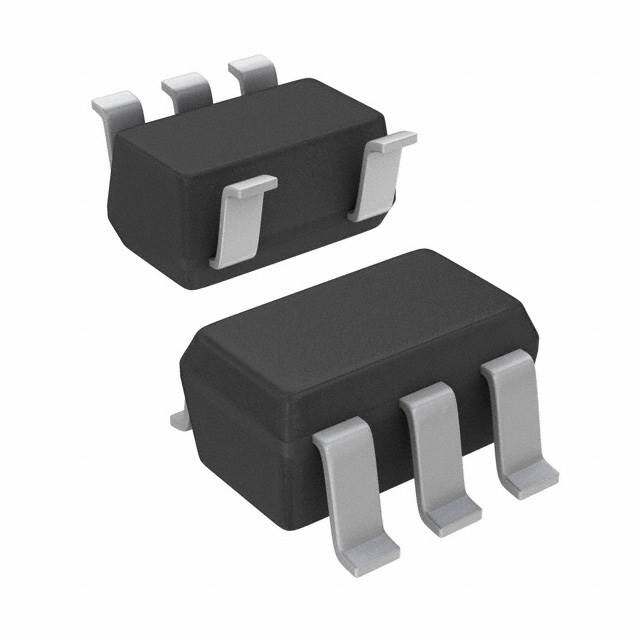
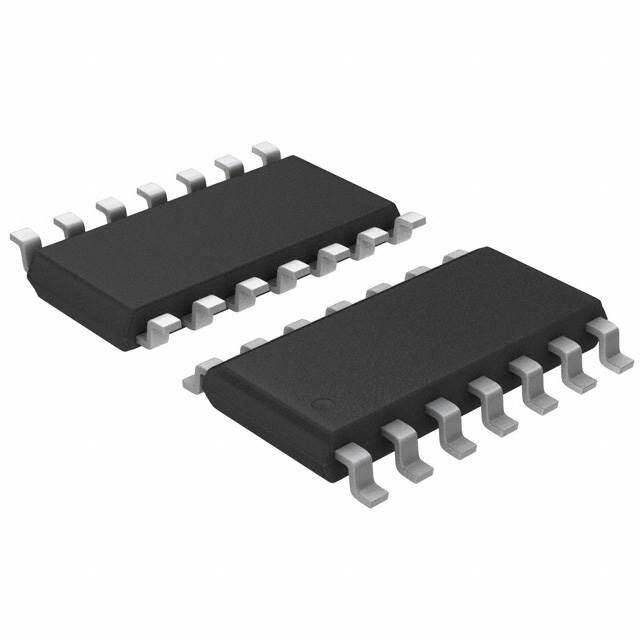



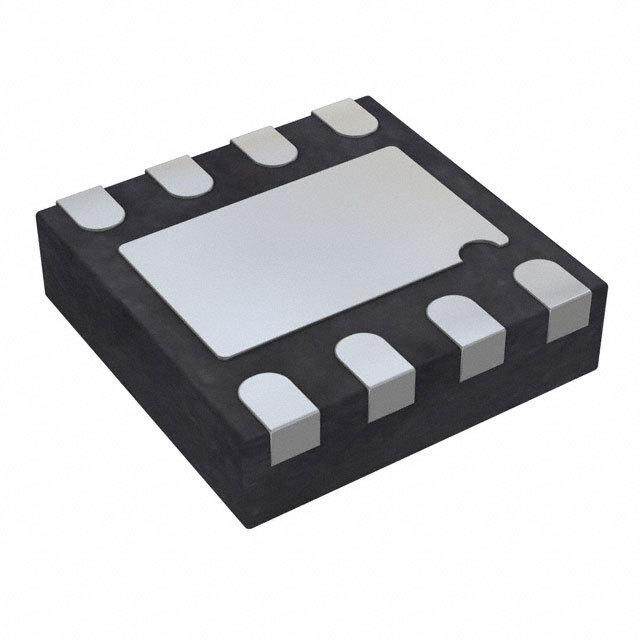

- 商务部:美国ITC正式对集成电路等产品启动337调查
- 曝三星4nm工艺存在良率问题 高通将骁龙8 Gen1或转产台积电
- 太阳诱电将投资9.5亿元在常州建新厂生产MLCC 预计2023年完工
- 英特尔发布欧洲新工厂建设计划 深化IDM 2.0 战略
- 台积电先进制程称霸业界 有大客户加持明年业绩稳了
- 达到5530亿美元!SIA预计今年全球半导体销售额将创下新高
- 英特尔拟将自动驾驶子公司Mobileye上市 估值或超500亿美元
- 三星加码芯片和SET,合并消费电子和移动部门,撤换高东真等 CEO
- 三星电子宣布重大人事变动 还合并消费电子和移动部门
- 海关总署:前11个月进口集成电路产品价值2.52万亿元 增长14.8%
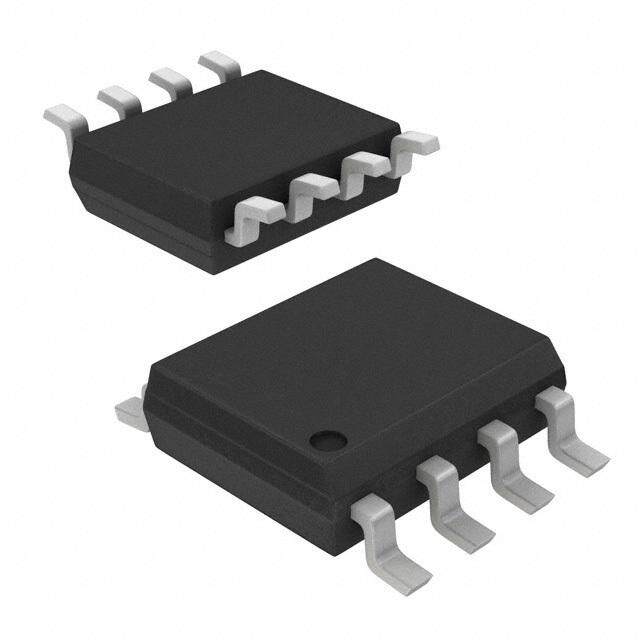


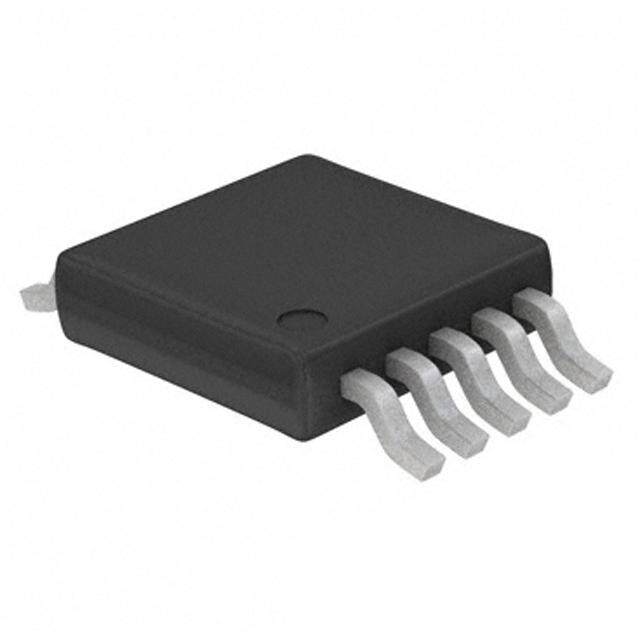
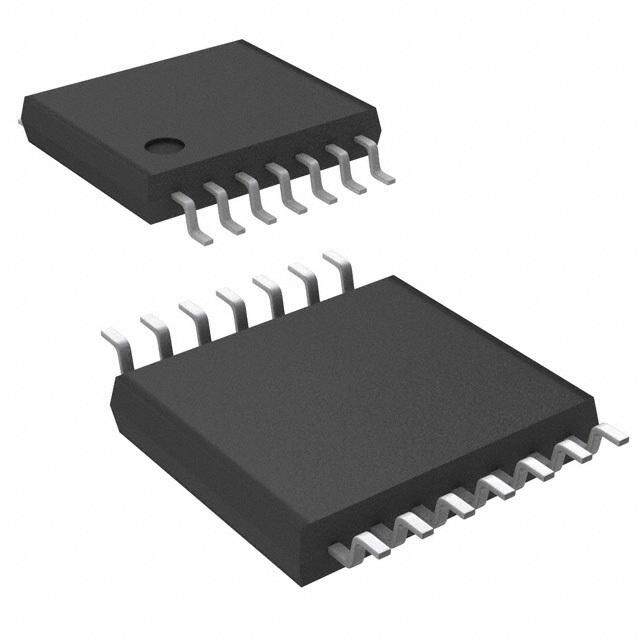
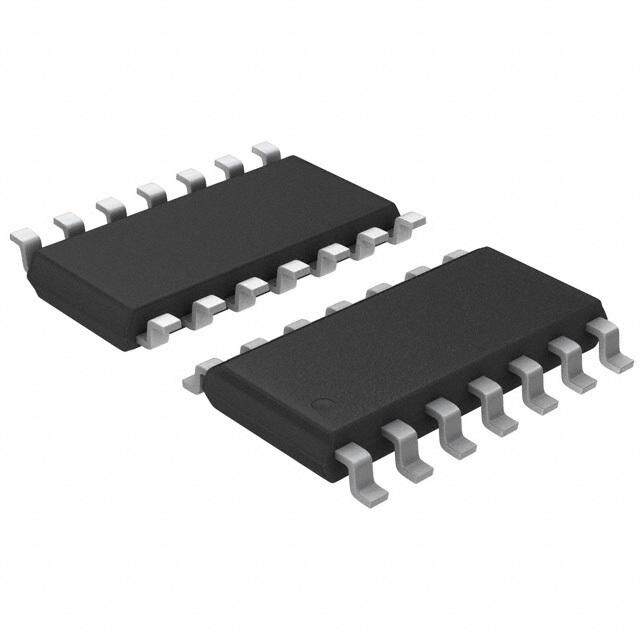
PDF Datasheet 数据手册内容提取
a (cid:1) 1 GHz, 5,500 V/ s Low Distortion Amplifier AD8009 FEATURES FUNCTIONAL BLOCK DIAGRAMS Ultrahigh Speed 8-Lead Plastic SOIC (R-8) 5-Lead SOT-23 (RT-5) 5,500 V/(cid:1)s Slew Rate, 4 V Step, G = +2 545 ps Rise Time, 2 V Step, G = +2 NC 1 AD8009 8 NC AD8009 La4rg40e MSiHgnz,a Gl B =a n+d2width –IN 2 7 +VS VOUT 1 5 +VS 320 MHz, G = +10 +IN 3 6 OUT –VS 2 Small Signal Bandwidth (–3 dB) –VS 4 5 NC +IN 3 4 –IN 1 GHz, G = +1 NC = NO CONNECT 700 MHz, G = +2 Settling Time 10 ns to 0.1%, 2 V Step, G = +2 PRODUCT DESCRIPTION Low Distortion over Wide Bandwidth The AD8009 is an ultrahigh speed current feedback amplifier SFDR with a phenomenal 5,500 V/µs slew rate that results in a rise –66 dBc @ 20 MHz, Second Harmonic time of 545 ps, making it ideal as a pulse amplifier. –75 dBc @ 20 MHz, Third Harmonic The high slew rate reduces the effect of slew rate limiting and Third Order Intercept (3IP) results in the large signal bandwidth of 440 MHz required for 26 dBm @ 70 MHz, G = +10 high resolution video graphic systems. Signal quality is main- Good Video Specifications tained over a wide bandwidth with worst-case distortion of Gain Flatness 0.1 dB to 75 MHz –40dBc @ 250 MHz (G = +10, 1 V p-p). For applications with 0.01% Differential Gain Error, R = 150 (cid:2) L multitone signals, such as IF signal chains, the third order 0.01(cid:3) Differential Phase Error, R = 150 (cid:2) L intercept (3IP) of 12 dBm is achieved at the same frequency. This High Output Drive distortion performance coupled with the current feedback 175 mA Output Load Drive architecture make the AD8009 a flexible component for a gain 10 dBm with –38 dBc SFDR @ 70 MHz, G = +10 stage amplifier in IF/RF signal chains. Supply Operation +5 V to (cid:4)5 V Voltage Supply The AD8009 is capable of delivering over 175 mA of load current 14 mA (Typ) Supply Current and will drive four back terminated video loads while maintaining low differential gain and phase error of 0.02% and 0.04°, APPLICATIONS respectively. The high drive capability is also reflected in the Pulse Amplifier ability to deliver 10 dBm of output power @ 70 MHz with IF/RF Gain Stage/Amplifiers –38dBc SFDR. High Resolution Video Graphics High Speed Instrumentations The AD8009 is available in a small SOIC package and will CCD Imaging Amplifier operate over the industrial temperature range –40°C to +85°C. The AD8009 is also available in an SOT-23-5 and will operate 2 over the commercial temperature range of 0°C to 70°C. G = +2 1 RF = 301(cid:2) RL = 150(cid:2) 0 –30 G = 2 B) –1 RF = 301(cid:2) ZED GAIN (d ––23 VO = 2V p-p GRRFL = == + 21100000(cid:2)(cid:2) Bc) ––4500 VO = 2V p-p 100S(cid:2)E CLOOANDD ORMALI ––45 TION (d–60 150S(cid:2)E CLOOANDD N R O–70 –6 ST DI THIRD –7 –80 100(cid:2) LOAD –8 1 10 100 1000 –90 THIRD FREQUENCY RESPONSE (MHz) 150(cid:2) LOAD Figure 1.Large Signal Frequency Response; G = +2 and +10 –100 1 10 70 REV.F FREQUENCY RESPONSE (MHz) Figure 2.Distortion vs. Frequency; G = +2 Information furnished by Analog Devices is believed to be accurate and reliable. However, no responsibility is assumed by Analog Devices for its use, nor for any infringements of patents or other rights of third parties that may result from its use. No license is granted by implication or otherwise One Technology Way, P.O. Box 9106, Norwood, MA 02062-9106, U.S.A. under any patent or patent rights of Analog Devices. Trademarks and Tel: 781/329-4700 www.analog.com registered trademarks are the property of their respective owners. Fax: 781/326-8703 © 2004 Analog Devices, Inc. All rights reserved.
IMPORTANT LINKS for the AD8009* Last content update 08/17/2013 12:33 pm PARAMETRIC SELECTION TABLES DESIGN COLLABORATION COMMUNITY Find Similar Products By Operating Parameters High Speed Amplifiers Selection Table Collaborate Online with the ADI support team and other designers about select ADI products. Follow us on Twitter: www.twitter.com/ADI_News DOCUMENTATION Like us on Facebook: www.facebook.com/AnalogDevicesInc AN-692: Universal Precision Op Amp Evaluation Board AN-649: Using the Analog Devices Active Filter Design Tool AN-214: Ground Rules for High Speed Circuits AN-356: User’s Guide to Applying and Measuring Operational Amplifier Specifications DESIGN SUPPORT MT-057: High Speed Current Feedback Op Amps Submit your support request here: MT-051: Current Feedback Op Amp Noise Considerations Linear and Data Converters Embedded Processing and DSP MT-034: Current Feedback (CFB) Op Amps MT-059: Compensating for the Effects of Input Capacitance on VFB Telephone our Customer Interaction Centers toll free: and CFB Op Amps Used in Current-to-Voltage Converters Americas: 1-800-262-5643 Europe: 00800-266-822-82 A Stress-Free Method for Choosing High-Speed Op Amps China: 4006-100-006 UG-127: Universal Evaluation Board for High Speed Op Amps in India: 1800-419-0108 SOT-23-5/SOT-23-6 Packages Russia: 8-800-555-45-90 UG-101: Evaluation Board User Guide Quality and Reliability Lead(Pb)-Free Data Two-Stage Current-Feedback Amplifier (Analog Dialogue, Vol. 29, No. 2, 1995) Current Feedback Amplifiers Part 1: Ask The Applications Engineer-22 (Analog Dialogue, Vol. 30, No. 3, 1996) Current Feedback Amplifiers Part 2: Ask The Applications Engineer-23 SAMPLE & BUY (Analog Dialogue, Vol. 30, No. 4, 1996) AD8009 View Price & Packaging Request Evaluation Board Request Samples Check Inventory & Purchase DESIGN TOOLS, MODELS, DRIVERS & SOFTWARE Analog Filter Wizard 2.0 Find Local Distributors AD8009 SPICE Macro-Model Rev B SMR/ADI, 8/97 EVALUATION KITS & SYMBOLS & FOOTPRINTS View the Evaluation Boards and Kits page for documentation and purchasing Symbols and Footprints * This page was dynamically generated by Analo g Devices, Inc. and inserted into this data sheet. Note: Dynamic changes to the content on this page (labeled 'Important Links') does not constitute a change to the revision number of the product data sheet. This content may be frequently modified. Powered by TCPDF (www.tcpdf.org)
AD8009–SPECIFICATIONS (@ T = 25(cid:3)C, V = (cid:4)5 V, R = 100 (cid:2); for R Package: R = 301 (cid:2) for G = +1, +2, A S L F R = 200 (cid:2) for G = +10; for RT Package: R = 332 (cid:2) for G = +1, R = 226 (cid:2) for G = +2 and R = 191(cid:2) for G = +10, unless otherwise noted.) F F F F AD8009AR/JRT Model Conditions Min Typ Max Unit DYNAMIC PERFORMANCE –3 dB Small Signal Bandwidth, V = 0.2 V p-p O R Package G = +1, R = 301 Ω 1,000 MHz F RT Package G = +1, R = 332 Ω 845 MHz F G = +2 480 700 MHz G = +10 300 350 MHz Large Signal Bandwidth, V = 2 V p-p G = +2 390 440 MHz O G = +10 235 320 MHz Gain Flatness 0.1 dB, V = 0.2 V p-p G = +2, R = 150 Ω 45 75 MHz O L Slew Rate G = +2, R = 150 Ω, 4 V Step 4,500 5,500 V/µs L Settling Time to 0.1% G = +2, R = 150 Ω, 2 V Step 10 ns L G = +10, 2 V Step 25 ns Rise and Fall Time G = +2, R = 150 Ω, 4 V Step 0.725 ns L HARMONIC/NOISE PERFORMANCE Second Harmonic G = +2, V = 2 V p-p 10 MHz –73 dBc O 20 MHz –66 dBc 70 MHz –56 dBc Third Harmonic 10 MHz –77 dBc 20 MHz –75 dBc 70 MHz –58 dBc Third Order Intercept (3IP) 70 MHz 26 dBm W.R.T. Output, G = +10 150 MHz 18 dBm 250 MHz 12 dBm Input Voltage Noise f = 10 MHz 1.9 nV/√Hz Input Current Noise f = 10 MHz, +In 46 pA/√Hz f = 10 MHz, –In 41 pA/√Hz Differential Gain Error NTSC, G = +2, R = 150 Ω 0.01 0.03 % L NTSC, G = +2, R = 37.5 Ω 0.02 0.05 % L Differential Phase Error NTSC, G = +2, R = 150 Ω 0.01 0.03 Degrees L NTSC, G = +2, R = 37.5 Ω 0.04 0.08 Degrees L DC PERFORMANCE Input Offset Voltage 2 5 mV T to T 7 mV MIN MAX Offset Voltage Drift 4 µV/°C –Input Bias Current 50 150 ±µA T to T 75 ±µA MIN MAX +Input Bias Voltage 50 150 ±µA T to T 75 ±µA MIN MAX Open-Loop Transresistance 90 250 kΩ T to T 170 kΩ MIN MAX INPUT CHARACTERISTICS Input Resistance +Input 110 kΩ –Input 8 Ω Input Capacitance +Input 2.6 pF Input Common-Mode Voltage Range 3.8 ±V Common-Mode Rejection Ratio V = ±2.5 50 52 dB CM OUTPUT CHARACTERISTICS Output Voltage Swing ±3.7 ±3.8 V Output Current R = 10 Ω, P Package = 0.7 W 150 175 mA L D Short-Circuit Current 330 mA POWER SUPPLY Operating Range +5 ±6 V Quiescent Current 14 16 mA T to T 18 mA MIN MAX Power Supply Rejection Ratio V = ±4 V to ±6 V 64 70 dB S Specifications subject to change without notice. –2– REV. F
AD8009 SPECIFICATIONS (@ T = 25(cid:3)C, V = (cid:5)5 V, R = 100 (cid:2), for R Package: R = 301 (cid:2) for G = +1, +2, A S L F R = 200 (cid:2) for G = +10). F AD8009AR/JRT Model Conditions Min Typ Max Unit DYNAMIC PERFORMANCE –3 dB Small Signal Bandwidth, V = 0.2 V p-p O G = +1, R = 301 Ω 630 MHz F G = +2 430 MHz G = +10 300 MHz Large Signal Bandwidth, V = 2 V p-p G = +2 365 MHz O G = +10 250 MHz Gain Flatness 0.1 dB, V = 0.2 V p-p G = +2, R = 150 Ω 65 MHz O L Slew Rate G = +2, R = 150 Ω, 4 V Step 2,100 V/µs L Settling Time to 0.1% G = +2, R = 150 Ω, 2 V Step 10 ns L G = +10, 2 V Step 25 ns Rise and Fall Time G = +2, R = 150 Ω, 4 V Step 0.725 ns L HARMONIC/NOISE PERFORMANCE Second Harmonic G = +2, V = 2 V p-p 10 MHz –74 dBc O 20 MHz –67 dBc 70 MHz –48 dBc Third Harmonic 10 MHz –76 dBc 20 MHz –72 dBc 70 MHz –44 dBc Input Voltage Noise f = 10 MHz 1.9 nV/√Hz Input Current Noise f = 10 MHz, +In 46 pA/√Hz f = 10 MHz, –In 41 pA/√Hz DC PERFORMANCE Input Offset Voltage 1 4 mV –Input Bias Current 50 150 ±µA +Input Bias Voltage 50 150 ±µA INPUT CHARACTERISTICS Input Resistance +Input 110 kΩ –Input 8 Ω Input Capacitance +Input 2.6 pF Input Common-Mode Voltage Range 1.2 to 3.8 V Common-Mode Rejection Ratio V = 1.5 V to 3.5 V 50 52 dB CM OUTPUT CHARACTERISTICS Output Voltage Swing 1.1 to 3.9 V Output Current R = 10 Ω, P Package = 0.7 W 175 mA L D Short-Circuit Current 330 mA POWER SUPPLY Operating Range +5 ±6 V Quiescent Current 10 12 mA Power Supply Rejection Ratio V = 4.5 V to 5.5 V 64 70 dB S Specifications subject to change without notice. REV. F –3–
AD8009 ABSOLUTE MAXIMUM RATINGS1 MAXIMUM POWER DISSIPATION Supply Voltage . . . . . . . . . . . . . . . . . . . . . . . . . . . . . . . . 12.6 V The maximum power that can be safely dissipated by the AD8009 Internal Power Dissipation2 is limited by the associated rise in junction temperature. The maxi- Small Outline Package (R) . . . . . . . . . . . . . . . . . . . . . . .0.75 W mum safe junction temperature for plastic encapsulated devices Input Voltage (Common-Mode) . . . . . . . . . . . . . . . . . . . . ±V is determined by the glass transition temperature of the plastic, S Differential Input Voltage . . . . . . . . . . . . . . . . . . . . . . .±3.5 V approximately 150°C. Exceeding this limit temporarily may cause Output Short-Circuit Duration a shift in parametric performance due to a change in the stresses . . . . . . . . . . . . . . . . . . . . . . Observe Power Derating Curves exerted on the die by the package. Exceeding a junction tempera- Storage Temperature Range R Package . . . . –65°C to +125°C ture of 175°C for an extended period can result in device failure. Operating Temperature Range (A Grade) . . . –40°C to +85°C While the AD8009 is internally short circuit protected, this may Operating Temperature Range (J Grade) . . . . . . . 0°C to 70°C not be sufficient to guarantee that the maximum junction tempera- Lead Temperature Range (Soldering 10 sec) . . . . . . . . . 300°C ture (150°C) is not exceeded under all conditions. To ensure NOTES proper operation, it is necessary to observe the maximum power 1Stresses above those listed under Absolute Maximum Ratings may cause perma- derating curves. nent damage to the device. This is a stress rating only; functional operation of the device at these or any other conditions above those indicated in the operational section of this specification is not implied. Exposure to absolute maximum rating 2.0 conditions for extended periods may affect device reliability. TJ = 150C 2Specification is for device in free air: 8-Lead SOIC Package: θ = 155°C/W. W) 5-Lead SOT-23 Package:J Aθ = 240°C/W. N (1.5 JA O TI A P 8-LEAD SOIC PACKAGE SI S DI1.0 R E W O P M U0.5 M AXI 5-LEAD SOT-23 PACKAGE M 0 –50–40–30–20 –10 0 10 20 30 40 50 60 70 80 90 AMBIENT TEMPERATURE ((cid:1)C) Figure 3.Plot of Maximum Power Dissipation vs. Temperature ORDERING GUIDE Temperature Package Package Model Range Description Option Branding AD8009AR –40°C to +85°C 8-Lead SOIC R-8 AD8009AR-REEL –40°C to +85°C 8-Lead SOIC R-8 AD8009AR-REEL7 –40°C to +85°C 8-Lead SOIC R-8 AD8009ARZ* –40°C to +85°C 8-Lead SOIC R-8 AD8009ARZ-REEL* –40°C to +85°C 8-Lead SOIC R-8 AD8009ARZ-REEL7* –40°C to +85°C 8-Lead SOIC R-8 AD8009JRT-R2 0°C to 70°C 5-Lead SOT-23 RT-5 HKJ AD8009JRT-REEL 0°C to 70°C 5-Lead SOT-23 RT-5 HKJ AD8009JRT-REEL7 0°C to 70°C 5-Lead SOT-23 RT-5 HKJ AD8009JRTZ-REEL* 0°C to 70°C 5-Lead SOT-23 RT-5 HKJ AD8009JRTZ-REEL7* 0°C to 70°C 5-Lead SOT-23 RT-5 HKJ AD8009ACHIPS Die *Z = Pb-free part. CAUTION ESD (electrostatic discharge) sensitive device. Electrostatic charges as high as 4000V readily accumulate on the human body and test equipment and can discharge without detection. Although the AD8009 features proprietary ESD protection circuitry, permanent damage may occur on devices subjected to high energy electrostatic discharges. Therefore, proper ESD precautions are recommended to avoid performance degradation or loss of functionality. –4– REV. F
Typical Performance Characteristics–AD8009 3 6.2 2 6.1 G = +1, RT G = +1, R 1 6.0 NORMALIZED GAIN (dB) ––––12340 RGGRGRVO TL P=== ==P A+++ A1C21110C0:,0K 00:+RKA (cid:1)m2RFAG: FV G=ER = Ep:3F – 23:=p02 (cid:1)03(cid:1)01(cid:1) GG = = + +21, 0R, ARN ADN RDT RT GAIN FLATNESS (dB) 55555.....98765 GRVROFL = === + 3122050100(cid:1)(cid:1)mV p-p –5 G = +2: RF = 226(cid:1) 5.4 G = +10: RF = 191(cid:1) –6 5.3 5.2 –7 1 10 100 1000 1 10 100 1000 FREQUENCY (MHz) FREQUENCY (MHz) TPC 1.Frequency Response; G = +1, +2, +10, TPC 4.Gain Flatness; G = +2 Rand RT Packages 8 0.4 G = +2 76 0.3 RRFL == 310510(cid:1)(cid:1) VO = 200mV p-p 5 0.2 VS = 5V GAIN (dB) 432 GRVROFL = =A =+ S 1235 0S01H(cid:1)(cid:1)OWN 4V p2-pV p-p TNESS (dB) 0.01 A L 1 AIN F–0.1 0 G –1 –0.2 –2 1 10 100 1000 –0.3 1 10 100 1000 10000 FREQUENCY (MHz) FREQUENCY (MHz) TPC 2.Large Signal Frequency Response; G = +2 TPC 5.Gain Flatness; G = +2; V = 5 V S 8 22 7 21 +85(cid:2)C 6 20 –40(cid:2)C 5 –40(cid:2)C 19 G = +10 2V p-p GAIN (dB) 432 GRVROFL = == =+ 12235V00 1p(cid:1)(cid:1)–p +85(cid:2)C GAIN (dB) 111876 RRVOFL =A= S 120 0S00H(cid:1)(cid:1)OWN 4V p-p 1 15 0 14 –1 13 –2 12 1 10 100 1000 1 10 100 1000 FREQUENCY (MHz) FREQUENCY (MHz) TPC 3.Large Signal Frequency Response vs. TPC 6.Large Signal Frequency Response; G = +10 Temperature; G = +2 REV. F –5–
AD8009 22 –35 21 –40 250MHz 20 –45 70MHz –50 19 AIN (dB)1187 G RRVOFL = === + 212100V000 p(cid:1)(cid:1)-p +85(cid:2)C –40(cid:2)C ORTION (dBc)–––656550 5MHz G16 ST 200(cid:1) 15 DI–70 22.1(cid:1) 50(cid:1) –75 POUT 14 50(cid:1) 50(cid:1) –80 13 –85 12 –10 –8 –6 –4 –2 0 2 4 6 8 10 12 14 1 10 100 1000 FREQUENCY (MHz) POUT (dBm) TPC 7.Large Signal Frequency Response vs. TPC 10.Second Harmonic Distortion vs. P ; (G = +10) OUT Temperature; G = +10 –30 0.02 G = +2 TION (dBc) –––456000 GRVFO = == 2 320V1 p(cid:1)-1p50S(cid:1)E CLOONADD,10S0(cid:1)EC LOONADD, DIFF GAIN (%) ––0000....00001201 0 RF = 301(cid:1) IRERL = 37.5(cid:1) RL = 1501(cid:1)00 R DISTO––8700 T10H0IR(cid:1)D L,OAD egrees) 00..1005 GRF = = + 3201(cid:1) RL = 37.5(cid:1) D –90 T15H0IR(cid:1)D L,OAD PHASE ( ––00..0005 RL = 150(cid:1) F –1001 10 70 DIF –0.10 0 100 FREQUENCY RESPONSE (MHz) IRE TPC 8.Distortion vs. Frequency; G = +2 TPC 11.Differential Gain and Phase –20 –30 G = +2 –35 G = +10 –30 RVRVOSFL ==== 5312V00V10 p(cid:1)(cid:1)-p THIRD ––4405 RRVFLO === 21200V 00 p(cid:1)(cid:1)-p SECOND DISTORTION (dBc) –––456000 SECOND DISTORTION (dBc) –––556050 –65 THIRD –70 –70 –75 –80 –80 1 10 100 200 5 10 70 FREQUENCY (MHz) FREQUENCY (MHz) TPC 9.Distortion vs. Frequency; G = +2; V = 5 V TPC 12.Distortion vs. Frequency; G = +10 S –6– REV. F
AD8009 10 –35 G = +2 –40 0 RF = 301(cid:1) –45 RL = 100(cid:1) –50 250MHz –10 100m V p-p ON TOP OF VS 70MHz c) –55 –20 B TORTION (d –––667500 5MHz PSRR (dB)––3400 –PSRR +PSRR S DI –75 ––8805 22.1(cid:1) 200(cid:1) 50(cid:1)POUT ––5600 –90 50(cid:1) 50(cid:1) –70 –9–510 –8 –6 –4 –2 0 2 4 6 8 10 12 14 0.03 0.1 1 10 100 500 POUT (dBm) FREQUENCY (MHz) TPC 13.Third Harmonic Distortion vs. P ; (G = +10) TPC 16.PSRR vs. Frequency OUT 50 300 200(cid:1) 45 22.1(cid:1) 250 m) 40 5500(cid:1)(cid:1)POUT Hz) ERCEPT POINT (dB 332505 50(cid:1) T CURRENT (pA/211050000 T U IN 20 NP NONINVERTING CURRENT I 50 15 INVERTING CURRENT 10 0 10 100 250 10 100 1k 10k 100k 1M 10M 100M250M FREQUENCY (MHz) FREQUENCY (Hz) TPC 14.Two Tone, Third Order IMD Intercept vs. TPC 17.Current Noise vs. Frequency Frequency; G = +10 1M 0 –10 301(cid:1) –15 301(cid:1) –20 200mVVI Np -=p VO (cid:1)) 100k GAIN –40 154(cid:1) 154(cid:1) 100(cid:1) NSRESISTANCE ( 10k RL = 100(cid:1) PHASE –80 HASE (Degrees) CMRR (dB)––––23345050 A P TR 1k –120 –45 –50 –55 100 –160 0.01 0.1 1 10 100 1000 –60 1 10 100 1000 FREQUENCY (MHz) FREQUENCY (MHz) TPC 15.Transresistance and Phase vs. Frequency TPC 18.CMRR vs. Frequency REV. F –7–
AD8009 2.0 100 G = +2 RF = 301(cid:1) 1.8 (cid:1)) E ( 10 C 1.6 N A T RESIST 1 (VSWR) 1.4 U P T 0.1 1.2 U O 1.0 0.01 0 0.03 0.1 1 10 100 500 0.1 1 10 100 500 FREQUENCY (MHz) FREQUENCY (MHz) TPC 19.Output Resistance vs. Frequency TPC 22.Input VSWR; G = +10 10 20 18 Hz) 8 16 nV/ m) 14 GRF = = + 3201(cid:1) OISE ( 6 X (dB 12 N A INPUT VOLTAGE 42 P MOUT18640 R50G(cid:1) RF 5500(cid:1)(cid:1) POUT GRF = = + 21000(cid:1) 2 0 0 10 100 1k 10k 100k 1M 10M 100M250M 5 10 100 250 FREQUENCY (Hz) FREQUENCY (MHz) TPC 20.Voltage Noise vs. Frequency TPC 23.Maximum Output Power vs. Frequency 25 –20 –30 G = +10 20 –40 RF = 200(cid:1) B) E (d 15 –50 OISE FIGUR 10 GRRFL = == + 31100010(cid:1)(cid:1) S (dB)12––7600 N –80 5 –90 0 1 10 100 500 1 10 100 1000 SOURCE RESISTANCE ((cid:1)) FREQUENCY (MHz) TPC 21.Noise Figure TPC 24.Reverse Isolation (S ); G = +10 12 –8– REV. F
AD8009 2.2 G = +2 2.0 CCOMP RRFL == 135001(cid:2)(cid:2) 49.9(cid:2) 49.9(cid:2) VO = 2V p-p 1.8 200(cid:2) WR)1.6 22.1(cid:2) S V (1.4 C = 0pF COMP 1.2 C = 3pF COMP 1.0 500mV 1ns 0 0.1 1 10 100 500 FREQUENCY (MHz) TPC 25.Output VSWR; G = +10 TPC 28.2 V Transient Response; G = +2 G = +2 19000 VOUT GRRFL = == + 21100000(cid:2)(cid:2) RRVOFL === 1435V00 1p(cid:2)(cid:2)-p VIN = 2VSTEP 10 0% 2V 2V 250ns 1V 1.5ns TPC 26.Overdrive Recovery; G = +10 TPC 29.4 V Transient Response; G = +2 G = +2 G = +10 RF = 301(cid:2) RF = 200(cid:2) RL = 150(cid:2) RL = 100(cid:2) VO = 200mV p-p VO = 200mV p-p 50mV 1ns 50mV 2ns TPC 27.2 V Transient Response; G = +2 TPC 30.Small Signal Transient Response; G = +10 REV. F –9–
AD8009 G = +10 RF = 200(cid:1) RL = 100(cid:1) VO = 2V p-p OV VS = 5V G = +2 RF = 301(cid:1) RL = 150(cid:1) 500mV 2ns 50mV VO = 200mV p-p 1ns TPC 31.2 V Transient Response; G = +10 TPC 34.2 V Transient Response; V = 5 V; G = +2 S 8 12 GRF = =+ 12000(cid:1) 7 C3Ad =B 2/dpiFv 9 RL = 100(cid:1) 6 6 VO = 4V p-p 5 CA = 1pF 3 1dB/div dB) 4 C A = 0pF 0 dB) (N 3 1dB/div –3 N ( AI AI G 2 –6 G VOUT = 200mV p–p 1 VIN 50(cid:1) VOUT –9 0 499(cid:1) 100(cid:1) –12 1V 3ns CA 499(cid:1) –1 –15 1 10 100 1000 FREQUENCY (MHz) TPC 32.4 V Transient Response; G = +10 TPC 35.Small Signal Frequency Response vs. Parasitic Capacitance CA = 2pF 5V0I(cid:1)N 499(cid:1)V1O0U0T(cid:1) OV CA = 1pF CA 499(cid:1) VOUT = 200mV p–p VS = (cid:2)5V CA = 0pF VS = 5V G = +2 RF = 301(cid:1) RL = 150(cid:1) 50mV VO = 200mV p-p 1ns 40mV 1.5ns TPC 33.Small Signal Transient Response; TPC 36.Small Signal Pulse Response vs. V = 5 V; G = +2 ParasiticCapacitance S –10– REV. F
AD8009 0 HP8753D AD8009 –10 G = 2 RF = RG= 301(cid:2) ZOUT = 50(cid:2) ZIN = 50(cid:2) –20 DRIVING WAVETEK 5201 +5V –30 TUNABLE BPF 0.001(cid:1)F 0.1(cid:1)F +10(cid:1)F N (dB) –40 fC = 50MHz 7 TIO –50 3 AD8009 49.9(cid:2) WAVETEK 5201 EJEC –60 49.9(cid:2) 2 4 6 BPF R –70 301(cid:2) –80 301(cid:2) –90 0.001(cid:1)F 0.1(cid:1)F 10(cid:1)F + –5V CENTER 50.000 MHz SPAN 80.000 MHz TPC 37.AD8009 Driving a Band-Pass RF Filter TPC 38.Frequency Response of Band-Pass Filter Circuit APPLICATIONS TPC 37 shows a circuit for driving and measuring the frequency All current feedback op amps are affected by stray capacitance response of a filter, a Wavetek 5201 tunable band-pass filter that on their –INPUT. TPCs 35 and 36 illustrate the AD8009’s is tuned to a 50 MHz center frequency. The HP8753D network response to such capacitance. provides a stimulus signal for the measurement. The analyzer has a 50 Ω source impedance that drives a cable that is terminated in TPC 35 shows the bandwidth can be extended by placing a 50 Ω at the high impedance noninverting input of the AD8009. capacitor in parallel with the gain resistor. The small signal pulse response corresponding to such an increase in capacitance/band- The AD8009 is set at a gain of +2. The series 50 Ω resistor at the width is shown in TPC 36. output, along with the 50 Ω termination provided by the filter and its termination, yield an overall unity gain for the measured As a practical consideration, the higher the capacitance on the path. The frequency response plot of TPC 38 shows the circuit –INPUT to GND, the higher R needs to be to minimize F to have an insertion loss of 1.3 dB in the pass band and about peaking/ringing. 75dB rejection in the stop band. RF Filter Driver The output drive capability, wide bandwidth, and low distortion of the AD8009 are well suited for creating gain blocks that can drive RF filters. Many of these filters require that the input be driven by a 50 Ω source, while the output must be terminated in 50 Ω for the filters to exhibit their specified frequency response. REV. F –11–
AD8009 75(cid:2) COAX PRIMARY MONITOR IOUTR 75(cid:2) RED 75(cid:2) ADV7160/ ADV7162 IOUTG 75(cid:2) GREEN 75(cid:2) IOUTB 75(cid:2) BLUE 75(cid:2) 5V + 0.1(cid:1)F 10(cid:1)F 7 3 75(cid:2) COAX ADDITIONAL MONITOR 6 75(cid:2) AD8009 2 4 RED 75(cid:2) 301(cid:2) 301(cid:2) 0.1(cid:1)F 10(cid:1)F + –5V 3 6 75(cid:2) AD8009 2 GREEN 75(cid:2) 301(cid:2) 301(cid:2) 3 6 75(cid:2) AD8009 2 BLUE 75(cid:2) 301(cid:2) 301(cid:2) Figure 4.Driving an Additional High Resolution Monitor Using Three AD8009s RGB Monitor Driver The primary monitor is connected in the conventional fashion High resolution computer monitors require very high full power with a 75 Ω termination to ground at each end of the 75 Ω bandwidth signals to maximize their display resolution. The cable. Sometimes this configuration is called “doubly termi- RGB signals that drive these monitors are generally provided by nated” and is used when the driver is a high output impedance a current-out RAMDAC that can directly drive a 75 Ω doubly current source. terminated line. For the additional monitor, each of the RGB signals close to the There are times when the same output wants to be delivered to RAMDAC output is applied to a high input impedance, noninvert- additional monitors. The termination provided internally by ing input of an AD8009 that is configured for a gain of +2. The each monitor prohibits the ability to simply connect a second outputs each drive a series 75 Ω resistor, cable, and termination monitor in parallel with the first. Additional buffering must be resistor in the monitor that divides the output signal by two, thus provided. providing an overall unity gain. This scheme is referred to as “back termination” and is used when the driver is a low output Figure 4 shows a connection diagram for two high resolution impedance voltage source. Back termination requires that the monitors being driven by an ADV7160 or ADV7162, a 220 MHz voltage of the signal be double the value that the monitor sees. (Megapixel per second) triple RAMDAC. This pixel rate Double termination requires that the output current be double the requires a driver whose full power bandwidth is at least half the value that flows in the monitor termination. pixel rate or 110 MHz. This is to provide good resolution for a worst-case signal that swings between zero scale and full scale on adjacent pixels. –12– REV. F
AD8009 Driving a Capacitive Load Figure 5 shows such a circuit with an AD8009 driving a 50 pF A capacitive load, like that presented by some A/D converters, load. With R = 0, the AD8009 circuit will be unstable. For a S can sometimes be a challenge for an op amp to drive depending gain of +2 and +10, it was found experimentally that setting R S on the architecture of the op amp. Most of the problem is caused to 42.2 Ω will minimize the 0.1% settling time with a 2 V step at by the pole created by the output impedance of the opamp and the output. The 0.1% settling time was measured to be 40 ns with the capacitor that is driven. This creates extra phase shift that this circuit. can eventually cause the op amp to become unstable. For smaller capacitive loads, a smaller R will yield optimal S One way to prevent instability and improve settling time when settling time, while a larger R will be required for larger capacitive S driving a capacitor is to insert a resistor in series between the loads. Of course, a larger capacitance will always require more opamp output and the capacitor. The feedback resistor is still time for settling to a given accuracy than a smaller one, and this connected directly to the output of the op amp, while the series will be lengthened by the increase in R required. At best, a S resistor provides some isolation of the capacitive load from the given RC combination will require about seven time constants op amp output. by itself to settle to 0.1%, so a limit will be reached where too large a capacitance cannot be driven by a given op amp and still +5V meet the system’s required settling time specification. G = +2: RF = 301(cid:2) = RG G = +10: RF = 200(cid:2), RG = 22.1(cid:2) 0.001(cid:1)F 0.1(cid:1)F +10(cid:1)F 3 7 6 2VSTEP RS RT 49.9(cid:2) 2 AD80094 CL 50pF RG RF 0.001(cid:1)F 0.1(cid:1)F 10(cid:1)F + –5V Figure 5.Capacitive Load Drive Circuit REV. F –13–
AD8009 OUTLINE DIMENSIONS 8-Lead Standard Small Outline Package [SOIC] (R-8) Dimensions shown in millimeters and (inches) 5.00 (0.1968) 4.80 (0.1890) 8 5 4.00 (0.1574) 6.20 (0.2440) 3.80 (0.1497) 1 4 5.80 (0.2284) 1.27B (0S.C0500) 1.75 (0.0688) 00..5205 ((00..00109969))(cid:6) 45(cid:3) 0.25 (0.0098) 1.35 (0.0532) 0.10 (0.0040) 0.51 (0.0201) 8(cid:3) COPLANARITY 0.31 (0.0122) 0.25 (0.0098)0(cid:3) 1.27 (0.0500) 0.10 SEPALTAINNGE 0.17 (0.0067) 0.40 (0.0157) COMPLIANT TO JEDEC STANDARDS MS-012AA CONTROLLING DIMENSIONS ARE IN MILLIMETERS; INCH DIMENSIONS (IN PARENTHESES) ARE ROUNDED-OFF MILLIMETER EQUIVALENTS FOR REFERENCE ONLY AND ARE NOT APPROPRIATE FOR USE IN DESIGN 5-Lead Small Outline Transistor Package [SOT-23] (RT-5) Dimensions shown in millimeters 2.90 BSC 5 4 1.60 BSC 2.80 BSC 1 2 3 PIN 1 0.95 BSC 1.90 1.30 BSC 1.15 0.90 1.45 MAX 0.22 0.08 10(cid:3) 0.15 MAX 0.50 SEATING 5(cid:3) 0.60 0.30 PLANE 0(cid:3) 0.45 0.30 COMPLIANT TO JEDEC STANDARDS MO-178AA –14– REV. F
AD8009 Revision History Location Page 9/04—Data Sheet changed from REV. E to REV. F. Changes to ORDERING GUIDE . . . . . . . . . . . . . . . . . . . . . . . . . . . . . . . . . . . . . . . . . . . . . . . . . . . . . . . . . . . . . . . . . . . . . . . . . . .4 Change to TPC 37 . . . . . . . . . . . . . . . . . . . . . . . . . . . . . . . . . . . . . . . . . . . . . . . . . . . . . . . . . . . . . . . . . . . . . . . . . . . . . . . . . . . . .11 3/03—Data Sheet changed from REV. D to REV. E. Updated Data Sheet Format . . . . . . . . . . . . . . . . . . . . . . . . . . . . . . . . . . . . . . . . . . . . . . . . . . . . . . . . . . . . . . . . . . . . . . . . Universal Changes to FEATURES . . . . . . . . . . . . . . . . . . . . . . . . . . . . . . . . . . . . . . . . . . . . . . . . . . . . . . . . . . . . . . . . . . . . . . . . . . . . . . . . . .1 Changes to Figure 2 . . . . . . . . . . . . . . . . . . . . . . . . . . . . . . . . . . . . . . . . . . . . . . . . . . . . . . . . . . . . . . . . . . . . . . . . . . . . . . . . . . . . . .1 Changes to SPECIFICATIONS . . . . . . . . . . . . . . . . . . . . . . . . . . . . . . . . . . . . . . . . . . . . . . . . . . . . . . . . . . . . . . . . . . . . . . . . . . . .2 Deleted AD8009EB from ORDERING GUIDE . . . . . . . . . . . . . . . . . . . . . . . . . . . . . . . . . . . . . . . . . . . . . . . . . . . . . . . . . . . . . . . .4 Inserted new TPC 5 . . . . . . . . . . . . . . . . . . . . . . . . . . . . . . . . . . . . . . . . . . . . . . . . . . . . . . . . . . . . . . . . . . . . . . . . . . . . . . . . . . . . .5 Inserted new TPC 9 . . . . . . . . . . . . . . . . . . . . . . . . . . . . . . . . . . . . . . . . . . . . . . . . . . . . . . . . . . . . . . . . . . . . . . . . . . . . . . . . . . . . .6 Inserted new TPC 12 . . . . . . . . . . . . . . . . . . . . . . . . . . . . . . . . . . . . . . . . . . . . . . . . . . . . . . . . . . . . . . . . . . . . . . . . . . . . . . . . . . . .6 Inserted new TPCs 33 and 34 . . . . . . . . . . . . . . . . . . . . . . . . . . . . . . . . . . . . . . . . . . . . . . . . . . . . . . . . . . . . . . . . . . . . . . . . . . . . .10 Updated OUTLINE DIMENSIONS . . . . . . . . . . . . . . . . . . . . . . . . . . . . . . . . . . . . . . . . . . . . . . . . . . . . . . . . . . . . . . . . . . . . . . .14 REV. F –15–
F) 4( 0 9/ – 0 – 1 1 0 1 0 C –16–
Mouser Electronics Authorized Distributor Click to View Pricing, Inventory, Delivery & Lifecycle Information: A nalog Devices Inc.: AD8009AR AD8009AR-REEL AD8009AR-REEL7
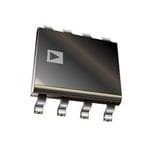
 Datasheet下载
Datasheet下载


